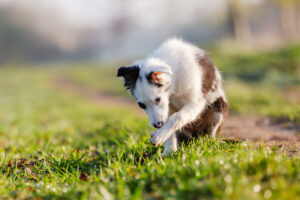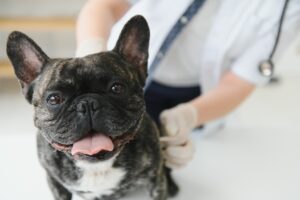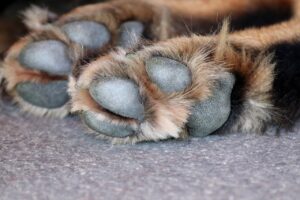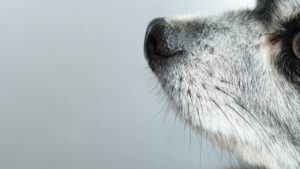If you’ve ever examined your dog’s paws closely, you may have noticed a small, seemingly vestigial claw higher up on their leg. This is known as the dewclaw, a unique feature found on the inside of a dog’s front legs and occasionally on their hind legs. While the dewclaw serves a purpose in some breeds, it can also be prone to injury if not properly cared for. In this post, we’ll explore the significance of the dewclaw, its purpose, and how you can ensure proper care for this often overlooked appendage.
Understanding the Dewclaw:
The dewclaw is a small, rudimentary claw located higher up on a dog’s leg than the rest of their claws. It’s similar in structure to the other claws but is not in contact with the ground when the dog is standing or walking. While most dogs have dewclaws on their front legs, some breeds also have them on their hind legs, though they are often removed in these cases for cosmetic or safety reasons.
Purpose of the Dewclaw:
The dewclaw serves several potential purposes, depending on the breed and individual dog. These include:
1. Grip: In some breeds, particularly those bred for activities like climbing or gripping, the dewclaw can provide additional traction and stability.
2. Balance: The dewclaw may aid in balance and maneuverability, especially during sharp turns or sudden movements.
3. Grooming: Dogs may use their dewclaws to groom themselves, particularly in areas that are difficult to reach with their tongues, such as their face and ears.
Caring for Your Dog’s Dewclaw:
While the dewclaw may not come into contact with the ground like the other claws, it’s still important to maintain proper care to prevent injury and infection. Here are some tips for caring for your dog’s dewclaw:
1. Regular inspection: Check your dog’s dewclaws regularly for signs of injury, inflammation, or overgrowth. Trim any excess hair around the dewclaw to prevent matting and irritation.
2. Nail trimming: Trim your dog’s dewclaws along with their other nails during regular grooming sessions. Be cautious not to cut the quick, the sensitive tissue inside the nail, which can cause bleeding and pain.
3. Preventing injury: Keep your dog’s dewclaws trimmed to reduce the risk of snagging on objects or getting caught in clothing or carpeting. If your dog participates in activities that may put strain on the dewclaw, such as hiking or agility training, consider using protective booties or wraps.
4. Veterinary care: If your dog’s dewclaw appears injured or infected, seek veterinary attention promptly. Your veterinarian can assess the condition and provide appropriate treatment, which may include cleaning, medication, or, in severe cases, surgical removal.
Conclusion:
The dewclaw may seem like a minor appendage, but it plays a role in certain breeds and requires proper care to ensure your dog’s comfort and well-being. By understanding the purpose of the dewclaw and implementing regular grooming and inspection practices, you can help prevent injury and maintain your dog’s paw health. Remember, if you have any concerns about your dog’s dewclaw or notice signs of injury or discomfort, consult your veterinarian for guidance and treatment.







